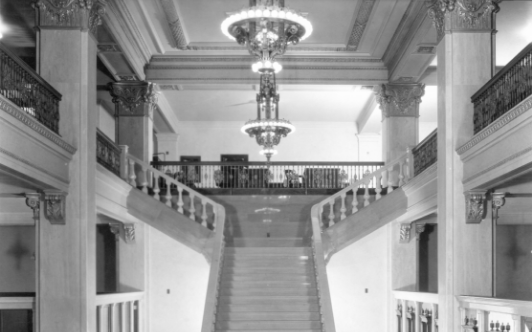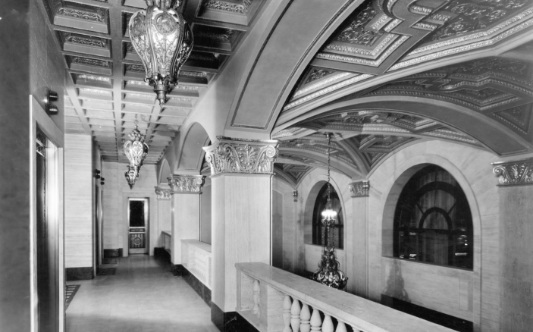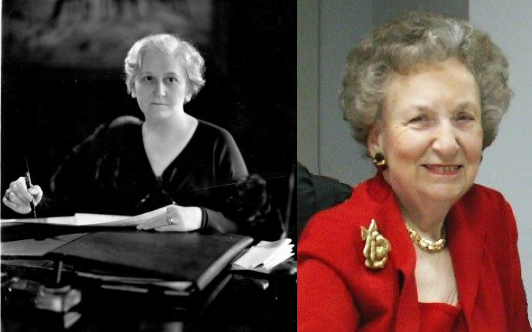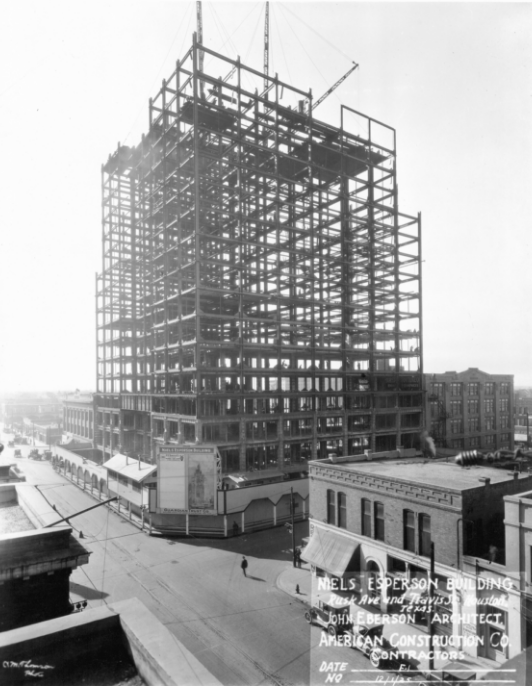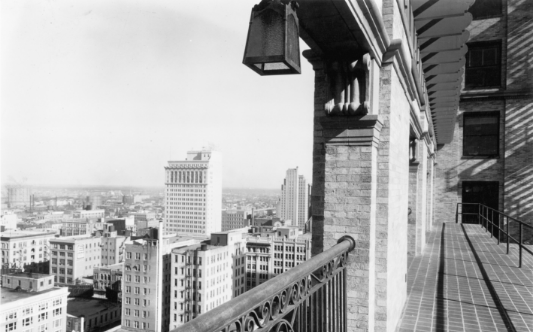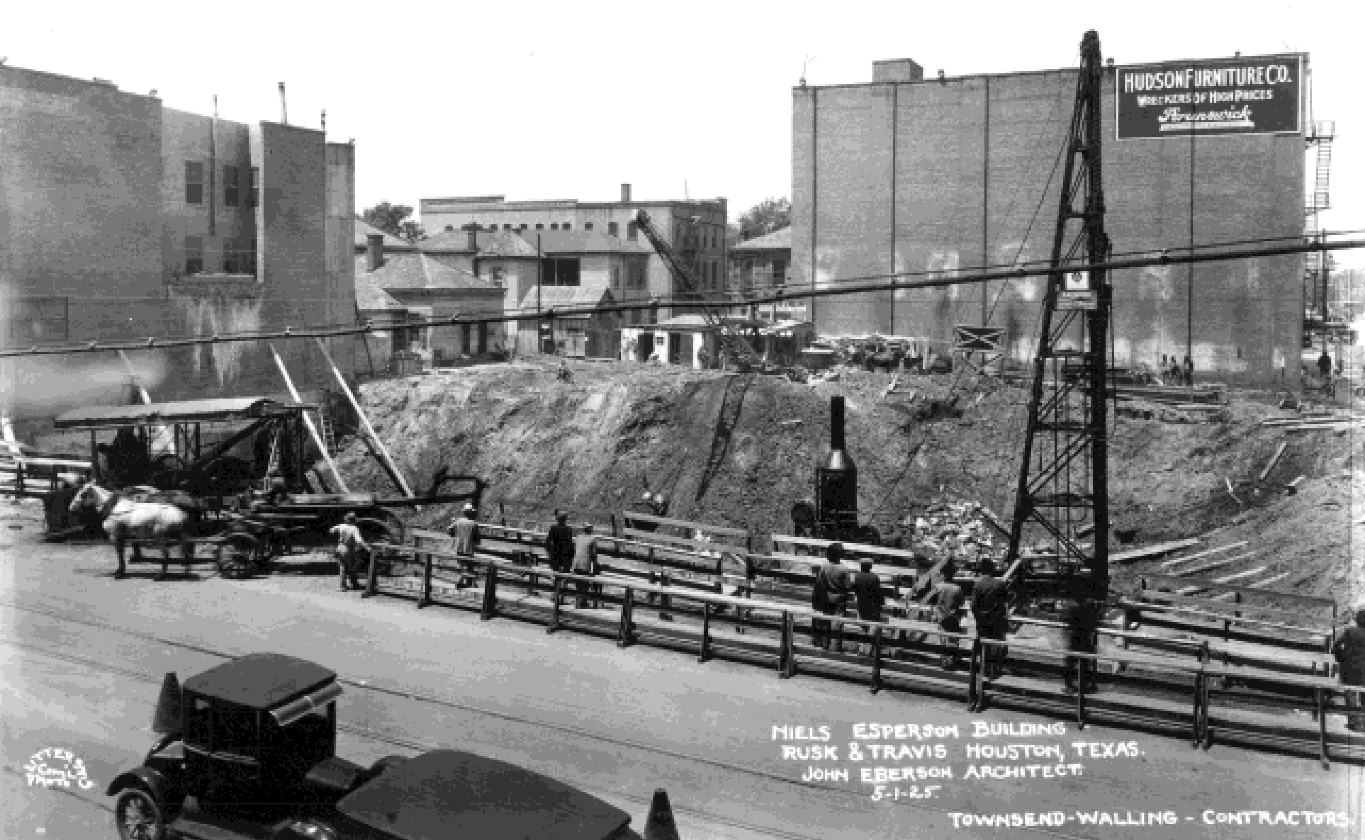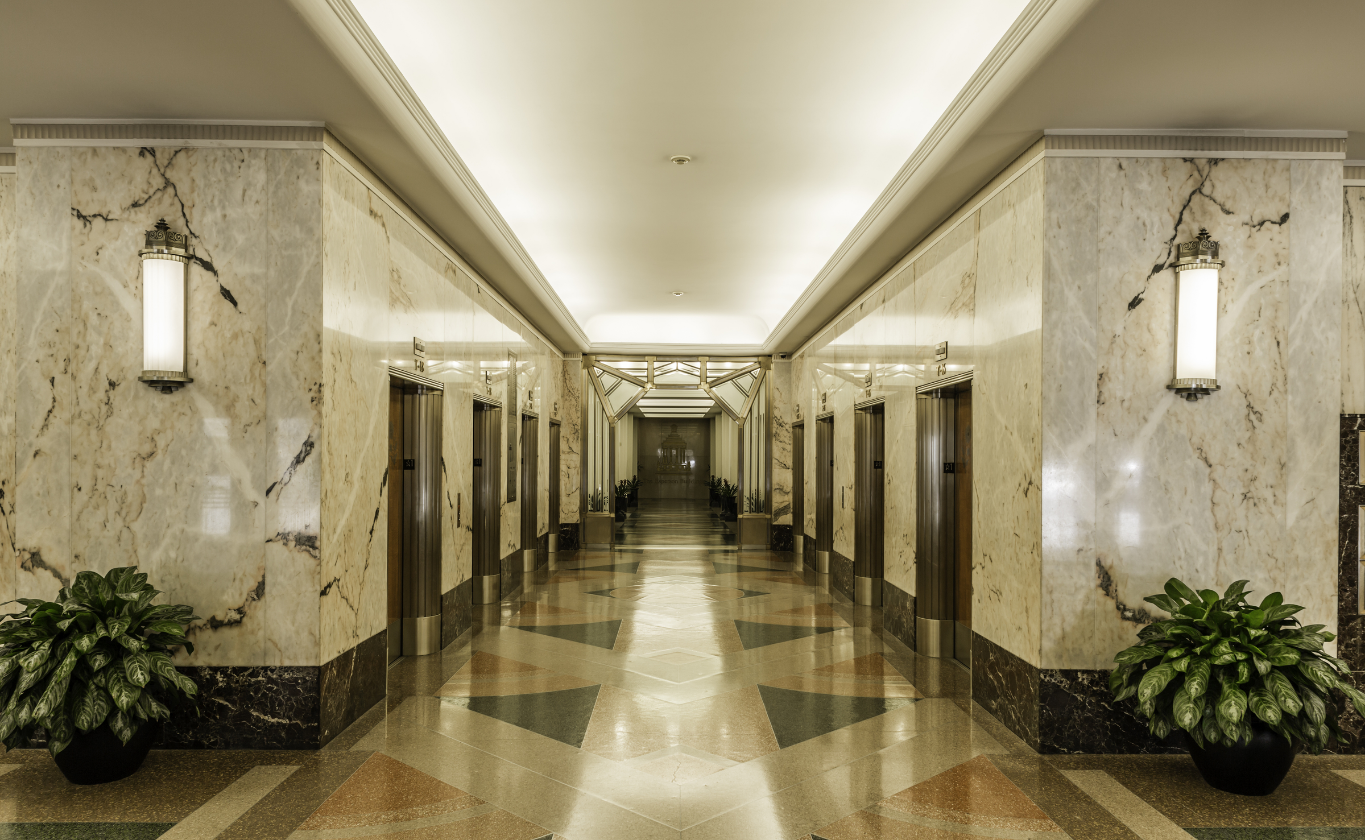History
A Glimpse in Time. The Magnificent Espersons
Compiled by Janice Martin with the assistance of Glendine Bankston and Lendsey Kersey
The term, “The Magnificent Espersons,” was coined by Vance Trimble as the title for his article, which appeared in the August 1947 issue of Oil Newsmagazine. Apropos, in light of Mellie and Niels Esperson’s accomplishments, especially their impact on the City of Houston. And so it is that we dedicate “A Glimpse in Time” to their memory.
We begin at the beginning with a partial quote from Vance Trimble’s article: “Niels and Mellie Esperson are no longer with us, but they left behind them two monuments that are very much alive—the Niels and Mellie Esperson Buildings close to the heart of Houston’s business
district . . . surely a tribute to the genius and vision of Niels and Mellie Esperson.”
A simple story of a Dane and a girl from the great plains of America. Time would show, however, that there was nothing simple about Niels and Mellie, or the love they shared.
Niels Esperson
The year was 1872, in Rhone, Denmark. A young, but stoutly built, 15-year-old Niels Peter Esperson, the son of Herman and Julia Marie (Funk) Esperson, was boarding a ship for a new, exciting land—America. Upon arrival in New York City, with a train ticket in hand and $5 in his pocket, Niels set out for California where he would spend the next five years working on a sheep ranch. When not laboring in the fields, he taught himself English by studying the Webster’s Dictionary and asking those around him how to pronounce the words. He also practiced his handwriting by tracing scripts over and over again, until he eventually developed exquisite penmanship. This skill would serve him well in later years. Niels also developed a keen interest in geology, studying with Professor Ireland, California’s state geologist.
In 1889, he headed eastward to Indian Territory in Oklahoma, taking part in the Oklahoma Land Rush and claiming his homestead tract in El Reno, a town he helped to found. Niels built a small cabin to live in, from which he operated his first major real estate venture. An eagerness to work, a good knack for “horse trading,” and his careful, exquisite penmanship were factors in becoming a combined realtor and unofficial recorder for Canadian County’s broad lands in a day when real estate was changing hands at a land boom clip.
Niels & Mellie
When Niels met Mellie four years later, it was love at first sight. After a whirlwind courtship, the couple married in El Reno on December 20, 1893. He was 36, she was 18, and because of the great difference in their ages, it is believed that is why Mellie always called Niels, “Mr. Esperson,” even in private.
In 1895, word spread like wildfire about gold in Colorado. Niels surprised Mellie at breakfast one day by announcing, “As soon as we eat, start packing!”
In Colorado, Niels toiled in the mines while Mellie washed his overalls and provided constant encouragement. The magic of gold would evade the Espersons, however, draining their savings and Niels’ health. He discovered that during his long hours in the mine he had contracted tuberculosis.
The Espersons retreated to Chanute, Kansas, where Mellie still had a family. While he rested, Niels began reading everything he could find on the new subject of petroleum exploration.
A devout Christian Scientist, Niels used to rest and relaxation to overcome his illness in two short years. His remarkable recovery made a believer out of Mellie, who embraced the religion. With his recovery complete, the Espersons were off to Texas, where, in 1905, Niels believed he would make his fortune in oil.
Though he hadn’t enough money to even pay for rigging timbers, Niels had a great vision, delivered with frankness and personal magnetism. He never had trouble getting money, even after several dry holes in the Humble Oil Field.
When his fifth well-hit oil, the tides turned and Niels was never in need of money again. He formed the Invincible Oil Company and drilled over 200 successful wells. The hectic activity forced the Espersons to take up residence near the Humble Oil Field for a time, staying in the Lone Star Hotel to avoid the long train rides from Houston. He later sold the company for $5 million.
Using the profits from the sale, Niels Esperson began investing in Houston real estate, particularly in the downtown area. He had a vision that Houston would become a city of over a million people one day, and he wanted to play a part in its development. He was also one of the original developers and financiers of the Houston Ship Channel, but his favorite parcel of land was along Travis Street. He dreamed of building a film theater and a skyscraper opposite the corner.
As fate would have it, though, Niels never got to see his dream. On October 21, 1922, while on a trip to Chicago to visit with an architect for his theater project, Niels Esperson died from a heart attack. He was 65 years old and had left behind large land holdings across Texas, including 300 acres along the Ship Channel, 35,000 acres at the mouth of the Rio Grande, a 1300-acre ranch in Liberty County full of oil reserves, and numerous corporations in several states.
Mellie takes up the reins of the Esperson Empire
At the age of 47, Mellie Esperson had to put her grief aside and take up the reins of the Esperson Empire. In doing so, she surprised many people by turning out to be a forthright businessperson. During their 29-year marriage, Mellie was always at her husband’s side, listening and learning everything about the oil and real estate business. Niels and Mellie would talk about the business every day they were together. With this in-depth knowledge in her pocket, she oversaw the control of their far-flung businesses and the $1,000,000 construction of the Majestic Theatre on the corner of Travis Street and Rusk Avenue, directly across from the future site of the Niels Esperson Building. The theater was completed in 1923 and stood until 1971.
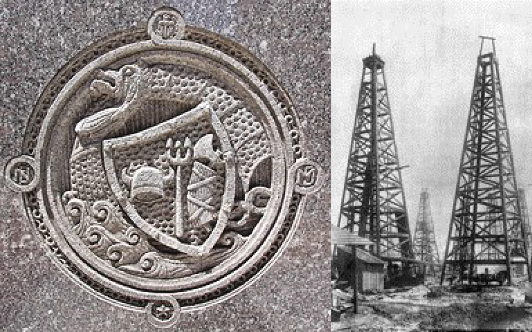
After the theater’s successful opening, Mellie asked architect John Eberson, who had designed the theater, to design an office building to complete her husband’s dream. With Mr. Eberson at her side, Mellie scoured the United States and Europe looking for just the right materials and craftsmanship to complete the building. The result was the Niels Esperson Building, constructed by the American Construction Company and fashioned after a building Niels had admired in Chicago. The 32-story, $4 million skyscraper was the tallest structure in Texas for two years after its completion and dedication in 1927.

In 1928, Mellie sold the Niels Esperson Building but kept her 25th-floor apartment as a base for her business operations. When the building went into default in 1932 during the Great Depression, Mellie bought it back for three-quarters of the original construction costs at a foreclosure auction. She had now spent a total of $7 million on her husband’s memory.
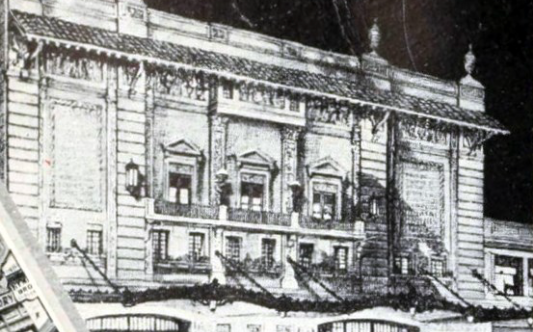
By 1934, Mellie Esperson was all “big business.” Surrounded by a large secretarial staff, she expanded the Esperson business base and was by all accounts a difficult person to get an appointment with because of her busy schedule.
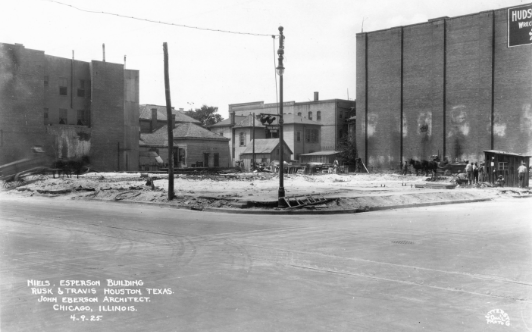
The Niels Esperson Building had been a tremendous success for Mellie as one of the city’s most prestigious and desirable locations for office space. Keeping with her desire to utilize the most recent advances in technology, Mellie had the entire building air-conditioned in 1938. The next year, she again contacted John Eberson to create a companion building to the Niels Esperson Building.

“But,” she cautioned Mr. Eberson, “it must not be as tall as Mr. Esperson’s building, nor as magnificent. I wouldn’t want it to detract from his glory in any way. Let it be to the right of his building—as I always was to him.”
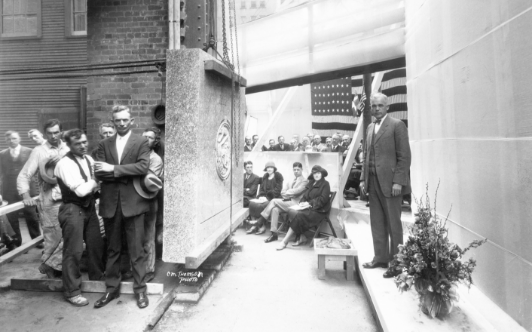
On the 14th anniversary of the Niels Esperson Building, the Mellie Esperson Building was officially opened in 1941, standing 250 feet high with 19 stories of office space. This was the largest building erected in the southwest during the Great Depression and was the first large building to be constructed with air conditioning. The two L-shaped structures, while separate, are physically joined on all but two floors.
Few people who watched Mellie cutting the cake knew that she couldn’t see her grand building. By 1940, Mellie could barely distinguish light from dark due to cataracts, and, being a devout Christian Scientist, she refused any medical attention. The blindness quickly progressed, robbing her of her sight by 1941.
She selected a trusted companion to be with her constantly and continued her control of day-to-day business operations despite her blindness. If a check needed signing, she would sign it, even though she would scrawl across the face of the entire check. However, it was her official signature, and none other was accepted.

Paul Goodrich was one of Mellie’s trusted companions. Paul’s wife, Virginia Goodrich, managed the Esperson Estate in an office next to the Esperson Museum on the thirteenth floor of the Mellie Esperson Building until her death on September 24, 2009, at the age of 89. During World War II, when the war first broke out, Mrs. Esperson provided a large part of the ground floor of her new building for USO quarters. She was constantly sending games and amusement devices to the GIs who thronged the recreation center.

In her later years, Mellie kept a promise shared by herself and her late husband—to give back something to the city that had been so good to them. The Museum of Fine Arts numbered among the recipients of her philanthropy. Among the many works of art she donated was a sundial she bought from the Charles Schwab estate. Entitled “Hercules Upholding the Heavens,” it was placed on the plot of lawn across from the Mecom Fountain, which is located in the traffic circle where Main and Montrose streets intersect.

After over two decades of running the Esperson business empire, “Mother Esperson” as she came to be known—despite never having children of her own—died on January 14, 1945, in her Warwick Hotel apartment at the age of 75. She was buried in Forest Park Cemetery next to “Mr. Esperson” of whom she once said, “. . . kept our marriage constantly full of surprises.” Close nieces and nephews were among the ten heirs who inherited the $7.5 million estate amassed by The Magnificent Espersons.
